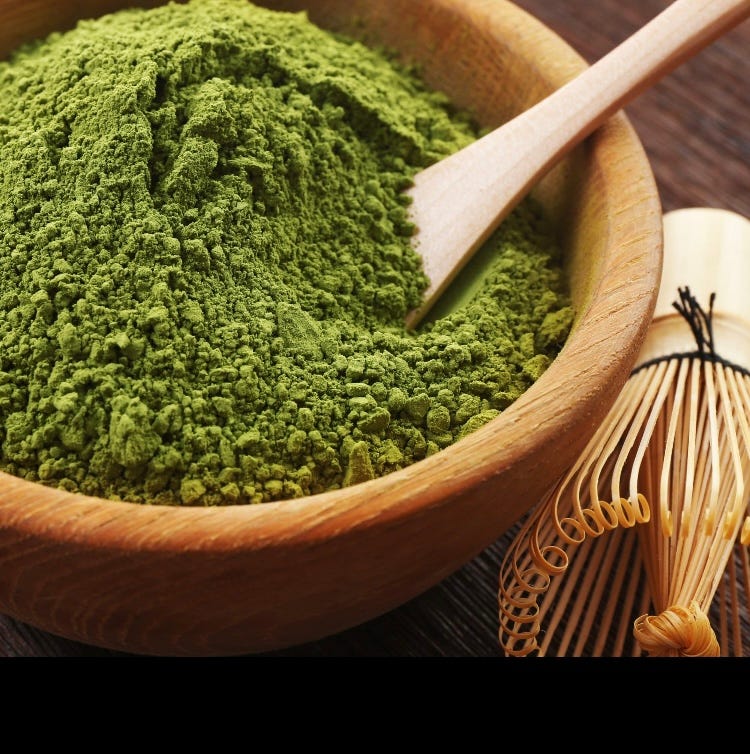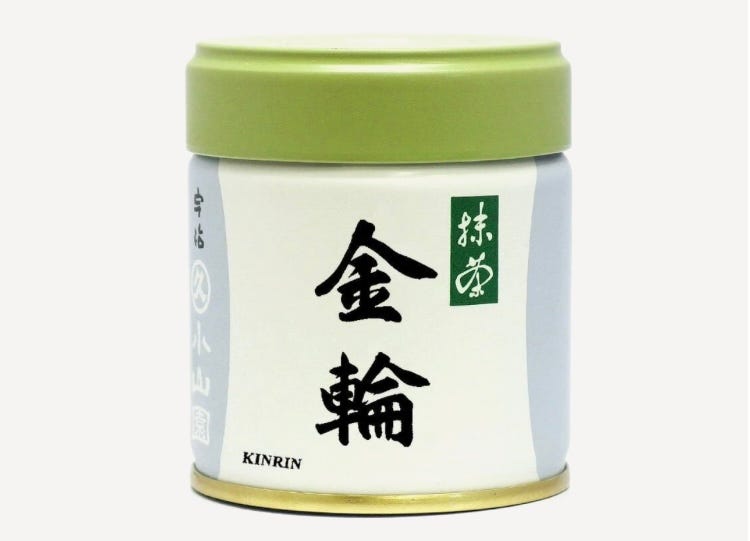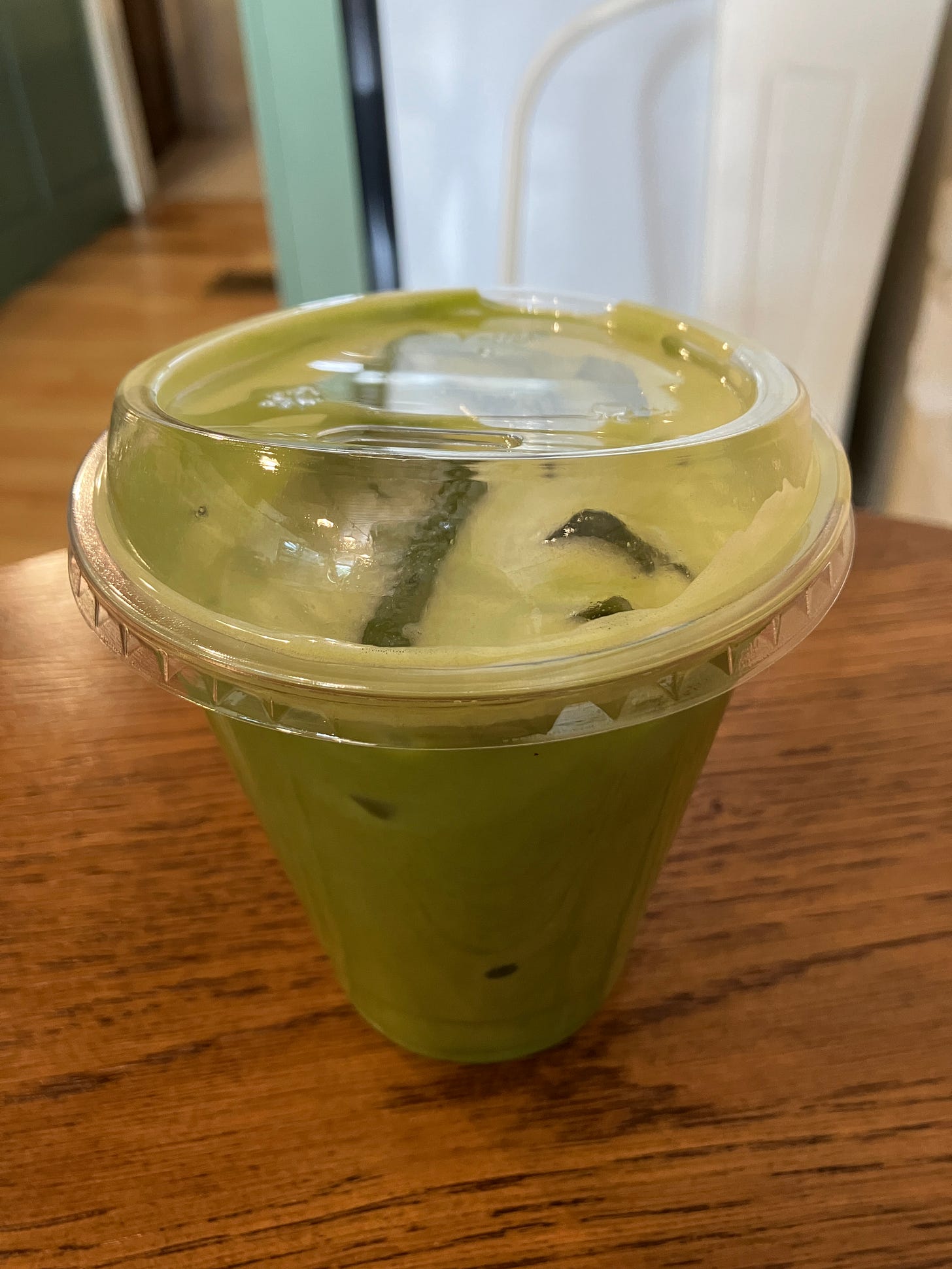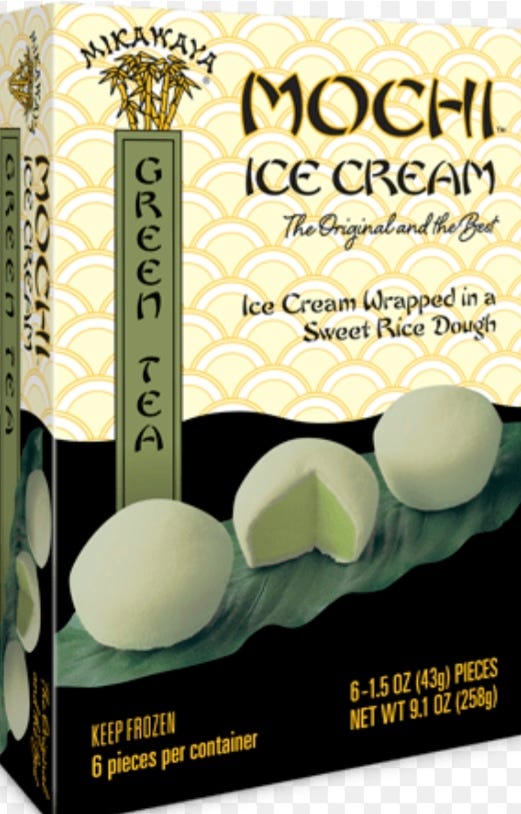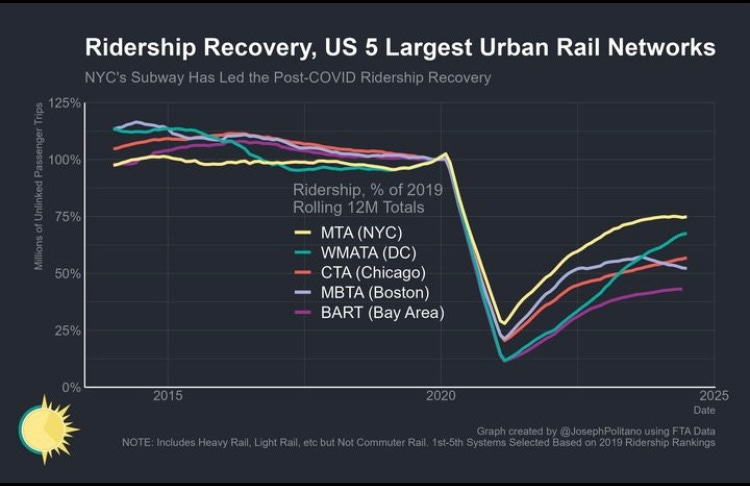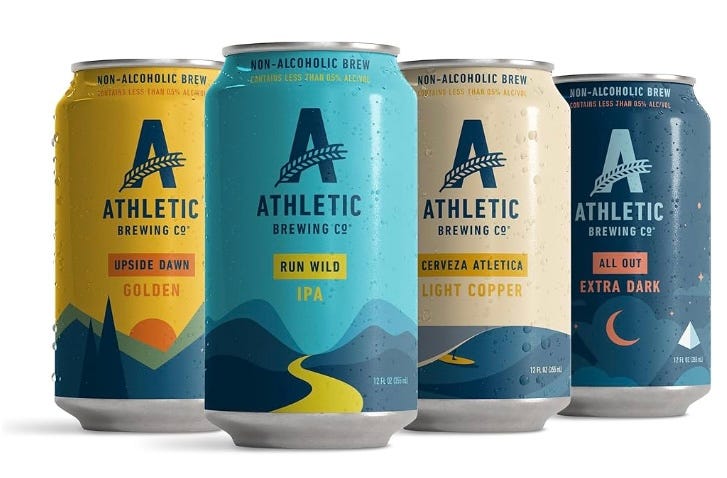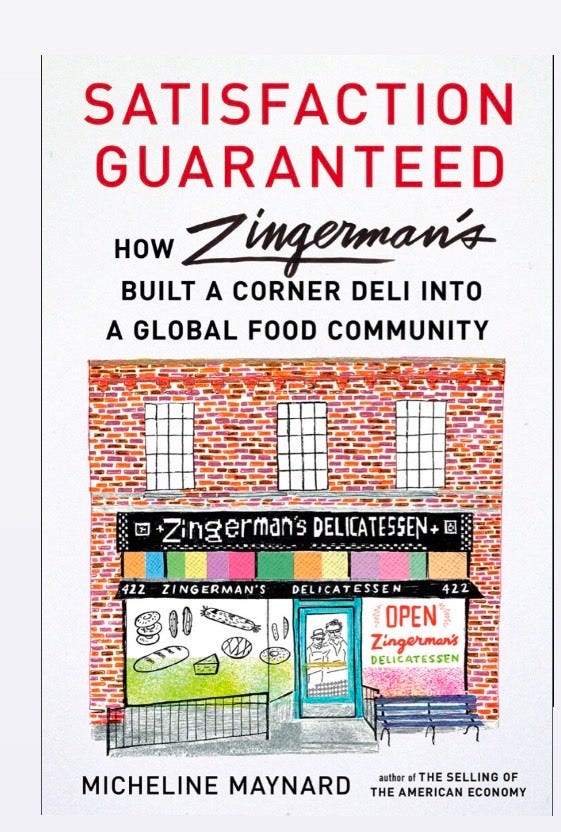Matcha’s Big Shift From Ceremonies To Coffee Bars
An ancient beverage takes flight, bringing fans along with it
Welcome to the CulinaryWoman Newsletter! I’m happy to greet our returning readers and to welcome new ones. This newsletter brings you news from the culinary world, with a focus on business trends and other stories I think you might find interesting and useful.
People have long asked me how I get story ideas. I’m a believer in light bulb moments, or times when something strikes me as worth exploring. This week, inspiration struck during a morning coffee break — or rather, a matcha latte break.
How We Became a Matcha Nation
When I lived in Japan 20 years ago, I learned a lot about green tea. I was based at International House, the research and study center. It was funded by the Rockefeller family after World War II to further cultural understanding between the U.S. and Japan. There’s a sister facility at Columbia University in New York City.
The friendly housekeepers left everyone a thermos of ice water every day. When they learned that I liked tea, they began leaving me a thermos of hot water, too. It allowed me to experiment with different varieties of green tea, and eventually, that led me to matcha.
In case you haven’t encountered it, matcha is a powder made from dried green tea leaves. (Green tea itself is made from young leaves and buds from tea plants, picked before they darken and mature.) Matcha dates back centuries, but became popular in Japan in the 1800s as part of formal tea ceremonies. It is drunk at weddings, funerals and other celebrations, which is why you will often hear about “ceremonial grade” matcha.
But it was never a daily drink. One reason is the expense. While you can find some grades for as little as $10 an ounce, most matcha will cost at least $20 and up. The most precious matcha comes from Uji, near Kyoto, where it is grown by just 60 families. The leaves are picked by hand and de-stemmed before they are dried, then processed in a stone grinder.
Needless to say, what you get at a coffee shop in America probaby does not come from Uji. But, how did you even come to be drinking it?
A celebrity endorsement
The answer lies with Gwyneth Paltrow, the actress and founder of the Goop lifestyle brand. In 2015, she posted a photo of a matcha latte that she tried at a coffee shop. Her post went viral, and soon consumers were setting aside their soy lattes for the bright green drinks.
Because it was green tea based, many people thought that matcha would have the same soothing effect as green tea. Its concentration means you only use about a teaspoon per serving.
They were somewhat wrong. While it shares the anti-oxidant properties of green tea, matcha actually has a higher caffeine count than ordinary green tea.
An eight-ounce cup of green tea has about 35 grams of caffeine, or half the 70 grams in a brewed cup of coffee. A serving of matcha, however, has 70 grams of caffeine, so you get the same boost as coffee. (By comparison, an espresso shot has 60 grams.)
Logically, if you get a double-sized latte, that bumps the caffeine to 140 grams, while a triple takes you to 210 grams, or equal to three cups of brewed coffee. This explains why some people can’t sleep after downing an afternoon matcha latte. If you are sensitive to caffeine, as I am, you might limit your consumption after lunch.
No matter its effect, the global matcha market is now estimated at $2.36 billion annually, and will probably reach $3 billion by the end of the decade.
One of the challenges that matcha faces is its taste. It’s alternatively described as grassy, and having a flavor like dirt. Unless you’re having a few sips, straight matcha is not something that goes down as easily as other drinks. Never fear: matcha has become a flavor note as much as something to drink on its own.
Far beyond a tea cup
I’ve seen matcha croissants, matcha soft serve, matcha babka, matcha creme brulee, matcha mochi (more on mochi in a second), and matcha quick breads. If you remember the Japan Week episode of The Great British Bake Off in 2020, you saw multiple bakers resort to matcha, to Paul Hollywood’s disdain. He is decidedly not a fan.
Matcha, when made properly, can be a wonderful experience. I’ve had great matcha lattes at Ayu Bakehouse in New Orleans and Strider Coffee in Ann Arbor, where the baristas patiently whisk the proper amount of matcha before adding it to a drink.
My advice: if you have interest in making it at home, invest in a whisk and some high quality matcha, which you can find at Coutelier in New Orleans, Otherwise, ask your barista what they are using, and see if its buds satisfy your taste buds.
The Surprising Roots Of Mochi Ice Cream
As matcha has grown in popularity, so has mochi ice cream. They’re little balls of ice cream encased in a stretchy rice-flour dough, which itself is known as mochi.
Since mochi are an essential part of Japanese desserts, it’s logical to think that mochi ice cream came from Japan, too. Interestingly, it did not.
In the 1980s, Japanese-American Frances Hashimoto, whose family owned the Miyakawa confectionary company, introduced her American husband Joel Friedman to traditional mochi sweets, made from that sweet dough filled with red bean paste or fruit.
He wasn’t crazy about them, but he could see the potential of mochi filled with something. According to The Nosher, Friedman hit on the idea of stuffing mochi with ice cream.
“After a full decade of culinary research and experimentation, Friedman and Hashimoto managed to crack the case by inventing their own style of ice cream uniquely suited to mochi’s needs,” the Nosher wrote. They began with three flavors — mango, red bean and green tea.
That sparked the growth of mochi ice cream in the United States, which you can now find in nearly every grocery store. Modern flavors range from chocolate to dulce de leche, and s’mores. There are plant based version and mochi sold individually. Cultural combinations, for the win.
Commute Times Change — And That’s Changing Dining
When the pandemic hit, commuting by car and rail plummeted across the U.S. Now, many companies have directed employees to go back to the office. About 49 percent of companies operate in-person, five days a week.
But a new pattern is emerging among people who have to physically report. A survey of commuting data reported by CNBC shows that employees are arriving at office jobs later, and leaving earlier.
Rather than the traditional 9-to-5, the new pattern is 10-to-4, or 10 a.m. to 4 p.m., according to the INRIX 2023 Global Traffic Scorecard.
One reason is flexibility on the part of companies who want employees to show up. Many aren’t monitoring how long they stay in the office. Stories abound of people who arrive for a meeting, log onto their computers to prove they’re there, then log off and leave as soon as the meeting is over.
That means the traditional morning commute and evening rush hour are not as pronounced as in the past. Instead, the study discovered that there’s a third “midday rush hour.” Almost as many trips to and from the office are being made at noon as there are at 9 a.m. and 5 p.m.
This, as you might expect, is having a significant impact on dining patterns. I’ve reported in the past about the growing popularity of early dinner reservations. Moreover, numerous cafes are staying open for just one eight-hour shift, allowing them to offer breakfast and lunch, but close before dinner.
For some, a short work day might also eliminate a need to eat out: you have a good-sized breakfast at home, nosh on an energy bar or bring a yogurt, then head home to cook dinner when you arrive.
The report is worth reading and may help you re-think assumptions about the way we work now.
The Big Name In Zero Alcohol Beer
As more people become sober curious, a growing market has emerged for de-alcoholized verson of favorite drinks. One of the most flourishing sectors is zero alcohol beers. While big name brewers have jumped into the game, the Athletic Brewing Company has become the gold standard for beer without the buzz.
Athletic’s rise hsa happened fast. Launched in 2018, it’s now an $800 million business selling more than 255,000 barrels last year, according to the Times of London. Unlike the big brands, who’ve generally offered a single zero alcohol version of one of their beers, Athletic has a broad lineup ranging from Mexican-style beers to extra dark to fruit beers. It also sells hoppy water, a light alternative to full-flavored beers.
Athletic has a 19 per cent share of the American domestic market for zero-alcohol beer and is gaining ground internationally. This month, Athletic was named the first official non-alcoholic beer partner of Arsenal FC, which will stock its Run Wild IPA beer at Emirates Stadium in London.
I’ve been trying Athletic’s products, which you can get in a sample pack in many package stores as well as on Amazon. I’m betting if you swap it in at a tailgate, some of your guests may not be able to tell the difference.
Keeping Up With CulinaryWoman
Putting on my auto industry hat, I was honored to be invited by PBS NewsHour to weigh in on their story about unions and the upcoming presidential election. Thank you to Zingerman’s Roadhouse for loaning us their bench out front for my interview with Paul Solman.
I’m happy to hear from you. Please get in touch and follow me here.
Website: www.michelinemaynard.com
Email: culinarywoman (@) gmail dot com
LinkedIn: Micheline Maynard
Threads and Instagram: (@) michelinemaynard
Etsy shop: City Tips Vintage (use the code CULTURESTUDY for 25% off)
TikTok: CulinaryWoman
I’ll be back tomorrow with Red Beans & Advice. I’m going to share my tips for smart shopping at a roadside stand. They’re no longer just big piles of sweet corn, as they were when I was growing up. Have a good week!
Buy Satisfaction Guaranteed here, and let me know if you’d like a signed bookplate.




